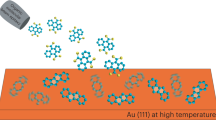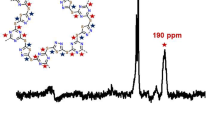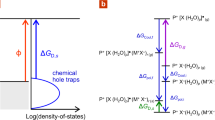Abstract
POLYNUCLEAR aromatic hydrocarbons in 75 per cent dioxane solution which contains 0.175 M tetrabutyl ammonium iodide are reducible in the dropping mercury electrode1. As shown by the corresponding polarograms, it is a two-electron addition step process, and it is similar to the reduction of these compounds by alkali metals or their amalgams and alcohol2, a fact which can be easily explained.
This is a preview of subscription content, access via your institution
Access options
Subscribe to this journal
Receive 51 print issues and online access
$199.00 per year
only $3.90 per issue
Buy this article
- Purchase on SpringerLink
- Instant access to full article PDF
Prices may be subject to local taxes which are calculated during checkout
Similar content being viewed by others
References
Wawzonek and Laitinen, J. Amer. Chem. Soc., 64, 2365 (1942).
Clar, E., “Aromatische Kohlenwasserstoffe” (Springer-Verlag, Berlin, 1941).
Basu and Bhattacharva, J. Chem. Phys., 25, 596 (1966).
Brown, J. Chem. Soc., 691 (1950).
Ruedenberg and Scherr, J. Chem. Phys., 21, 1565 (1953).
Basu, J. Chem. Phys., 23, 1548 (1955).
Author information
Authors and Affiliations
Rights and permissions
About this article
Cite this article
FERNANDEZ-ALONSO, J., DOMINGO, R. Para-Localization Energy (Free-Electron Molecular-Orbital Method) and Polarographic Half-Wave Potentials of some Polynuclear Hydrocarbons. Nature 179, 829 (1957). https://doi.org/10.1038/179829a0
Issue date:
DOI: https://doi.org/10.1038/179829a0



